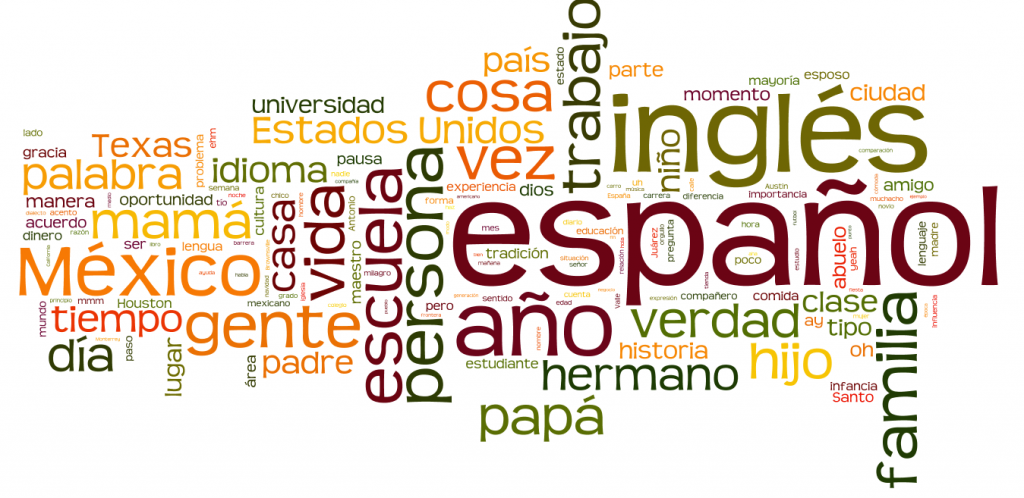A noun is essentially a label for places, things, events, ideas, concepts and so on. Like English, nouns in Spanish may be categorized as common or proper, count or mass, singular or plural. Unlike English, Spanish nouns are also categorized as either masculine or feminine.
Common vs. Proper
Common nouns are the generic term for something. Common nouns in Spanish are never spelled with a capital letter unless they begin a sentence. Proper nouns are specific names (for example people, cities, or states) and begin with capital letters. As seen in the examples below, the proper nouns Diosito, Ceci, Sandy, and Lupita are capitalized, while the common nouns bendiciones and diva are not.
Diosito me ha regalado muchas bendiciones.God has given me many blessings. Ceci, la más grande, es bien tranquila. Sandy es una diva. Lupita es muy inteligente.
Ceci, the oldest, is very calm. Sandy is a diva. Lupita is very intelligent.
Count vs. Mass
Another way of classifying nouns is according to whether or not they can be counted. Count nouns identify individual entities that can be counted, like siblings.
Nada más tengo un hermano y tengo cinco hermanas.I only have one brother and I have five sisters.
In contrast, a mass noun refers to an entity as an uncountable unit. Mass nouns can be modified with adjectives that refer to quantity, such as mucho or poco since they can not be modified with numbers. In the following example, dinero is conceived of as a mass, an undefined quantity and is modified by an adjective of quantity, poco.
La gente trabaja mucho por muy poco dinero.People work for very little money.
Singular vs. Plural
All nouns in Spanish and English are marked for number: singular (one) or plural (more than one). Spanish, like English, usually indicates plurality by adding an -s to the end of the singular noun. Count nouns have both singular and plural forms.
En la familia hay una variedad genética bastante interesante porque hay, por ejemplo Alicia, mi hermana mayor, y dos otros hermanos que son rubios de ojos azules. Tengo una hermana y un hermano que son bastante morenos.In the family there is a pretty interesting genetic variety because there is, for example, Alicia, my older sister and two other brothers that are blond with blue eyes. I have a sister and brother that are quite dark.
Mass nouns typically have only a singular form. Try saying the plural forms of the following English mass nouns: water, furniture, money, makeup.
It sounds strange, doesn’t it? That’s because they are mass nouns.
Masculine vs. Feminine
In English, grammatical gender is based on biology and is only relevant for pronouns (he, she, it) and possessive determiners (his, her, its). Gender in Spanish, on the other hand, affects all nouns, pronouns, adjectives and determiners. All nouns have a gender, which determines the gender of any adjectives or determiners that modify it. Notice in the example below how the gender of the noun matches the gender of the determiner preceding it.
Y ella me dice sí los hombres lavan trastes, los hombres planchan, los hombres les ayudan a las esposas a limpiar la casa.And she told me that yes men wash the dishes, men iron, men help their wives clean the house.
Unlike English, the grammatical concept of gender in Spanish has little to do with biological sex. Therefore, inanimate objects such as cars, school, guns and mountains are categorized as either masculine or feminine (there is no neuter gender for Spanish nouns).
Un carro se pasó enfrente de la escuela con pistolas.
A car passed in front of the school with guns.
El sol se esconde detrás de las montañas pero todavía el cielo está iluminado.
The sun hides behind the mountains but the sky is still lit up.
Remember that gender in Spanish, for the most part, is not about sex, but is simply an arbitrary category. The terms masculine and feminine really mean nothing more than noun class A and noun class B. Because grammatical gender is fairly arbitrary, it is essential to memorize a noun’s gender along with its spelling and pronunciation.
